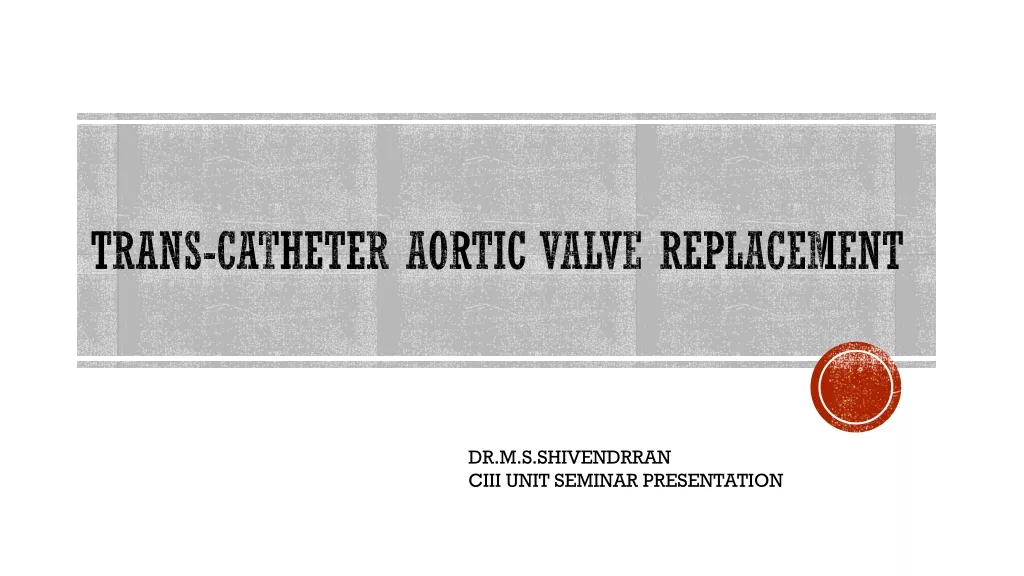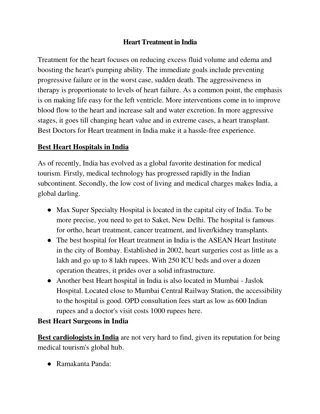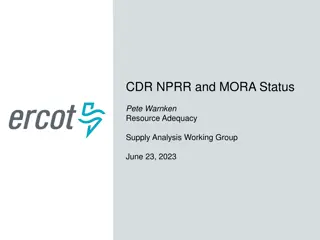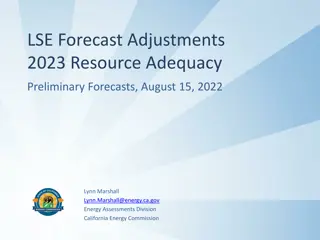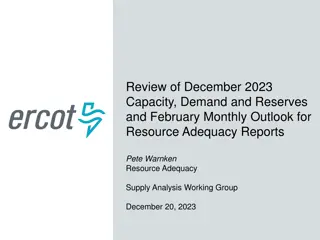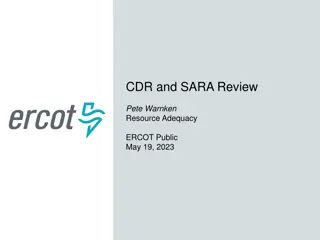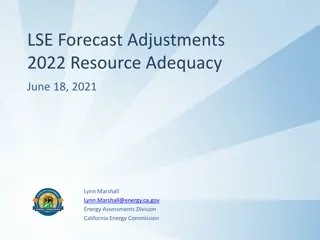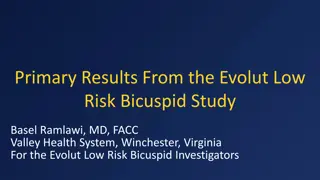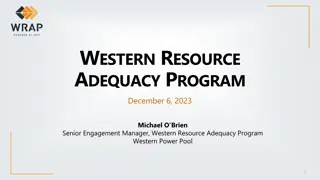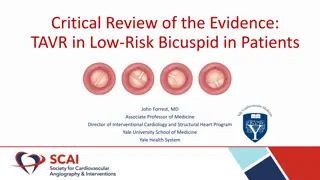Assessing Adequacy of TAVR Centers: A Heart Team's Perspective
The article discusses the sufficiency of TAVR centers from the viewpoint of a heart team comprising interventional cardiologists and cardiac surgeons. It explores case studies, national coverage determinations, valve selection choices, and guidelines related to aortic aneurysms and aortic valve replacement. The importance of humility in acknowledging limitations for competent decision-making is emphasized.
Download Presentation

Please find below an Image/Link to download the presentation.
The content on the website is provided AS IS for your information and personal use only. It may not be sold, licensed, or shared on other websites without obtaining consent from the author.If you encounter any issues during the download, it is possible that the publisher has removed the file from their server.
You are allowed to download the files provided on this website for personal or commercial use, subject to the condition that they are used lawfully. All files are the property of their respective owners.
The content on the website is provided AS IS for your information and personal use only. It may not be sold, licensed, or shared on other websites without obtaining consent from the author.
E N D
Presentation Transcript
Do We Have Enough TAVR Centers? A Heart Team Perspective Interventional cardiology: Interventional cardiology: Megan Coylewright, MD MPH FSCAI Dartmouth-Hitchcock Heart and Vascular Center Cardiac surgery: Cardiac surgery: Melissa Levack, MD Vanderbilt University Medical Center
Disclosures Dr. Coylewright: Dr. Levack: Boston Scientific: research and honoraria Edwards LifeSciences: research and honoraria W.L. Gore: honoraria Boston Scientific: honoraria Edwards LifeSciences: honoraria
Agenda Systems of Care Two case studies of severe AS
the humility of knowing ones limitations is an important element of competence. Absolute certainty leaves little room for shared decision-making. Harvey Max Chochinov, CMAJ 2010
Case 1 59 year old male Bicuspid AV with severe AS 5.3 cm ascending aortic aneurysm
Valve Selection Choice N Engl J Med 2017; 377: 1847-1857 Long term mortality benefit for mechanical prosthesis compared to biologic prosthetic persists until age 55 in patients undergoing aortic valve replacement
Aortic Aneurysm Guidelines 2014/2017 AHA guidelines 2014/2017 AHA guidelines Class I: Operative intervention is indicated in asymptomatic patients with BAV if the diameter of the root or ascending is 5.5 cm or greater center with experience) or when ratio of maximal ascending or aortic root area divided by patients height exceeds 10 (Index) 2014 AHA guidelines 2014 AHA guidelines Class IIa: Elective intervention for aortic aneurysm is reasonable in asymptomatic patients with BAV if root or ascending is 5.0 cm or greater AND there is an additional risk factor for dissection (family history of aortic dissection or growth rate 0.5 cm or greater per year (or if low risk and surgery performed at an expert center with experience) or when ratio of maximal ascending or aortic root area divided by patients height exceeds 10 (Index) Class IIa: Elective intervention for aortic aneurysm is reasonable in asymptomatic patients with BAV undergoing AVR when diameter of aorta is 4.5 cm In selected patients with aortic dilatation and family history of thoracic aortic disease, genetic consultation and testing may be useful in determining the timing of intervention
Aortopathy and BAV Associated Aortopathy Aortic dilatation present in 20-42% of patients with BAV Active ongoing surveillance critical for BAV (and TAV) aneurysms Risk of dissection and rupture are catastrophic Surveillance requires increased doctor visits, aggressive BP management, yearly imaging and increases healthcare costs Svensson et al. (2011) Valve alone vs Valve-Aorta NO increase risk of death, stroke, or other serious complication related to surgery
Shared Decision Making Is it better to do SAVR + ascending aortic replacement at the time of index operation vs TAVR and active surveillance of aneurysm at index? This discussion will evolve with younger and lower risk patients If TAVR alone selected, what TAVR valve option is best suited?
Case 2 68 year old woman with hypertension Severe tricuspid aortic stenosis Strong value to remain close to home, especially in COVID era
563 Hospitals where SAVR is the only therapeutic treatment option for severe symptomatic AS 1,103 540 Hospitals performing Surgical AVR Hospitals performing TAVR Data Source: FY2017 MEDPAR, presented by Dr. Leon at MEDCAC meeting, July 25, 2018
What influences our choice of therapy? What influences our choice of therapy? What is most important to patients? Disabling stroke/mortality TAVR Reduced risk AF, bleeding, renal failure Less stroke Rapid return to work/activities/QOL Less burden on others More days at home SAVR Longer term data on durability Less PVR CABG, MAZE, LAAO Lower pacemaker Locally available Clinician preference Adapted in part from MEDCAC presentation, Dr. Leon for AdvaMed, July 25, 2018; Still et al. Current Cardiology Reports 2018
Life expectancy after aortic valve replacement Glaser et al. JACC 2019 At 10 years, 71% of patients 65-75 years are still alive
At 15 years, 18% of patients 65-75 years are still alive Mcclure et al. Ann Thorac Surg 2010
the incorporation of patient preferences and values into patients treatment decisions.
Do We Have Enough TAVR Centers? A Heart Team Perspective Melissa Levack, MD melissa.levack@vumc.org Megan Coylewright, MD MPH FSCAI megan.coylewright@Hitchcock.org


